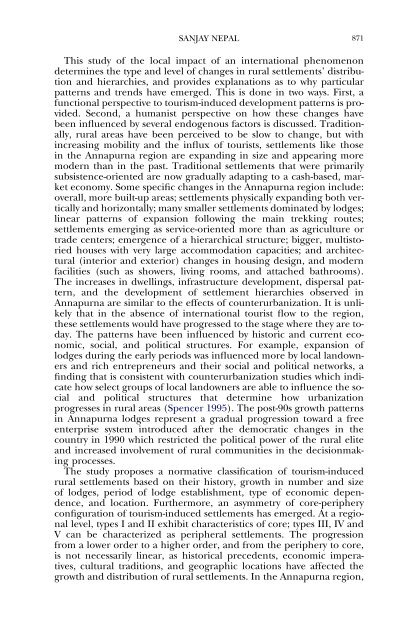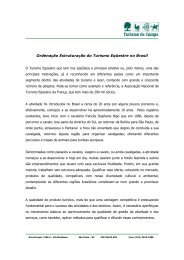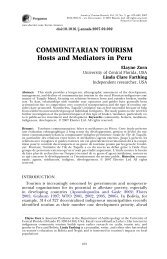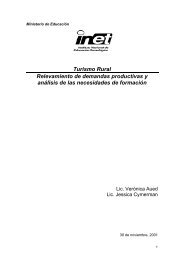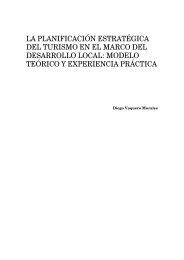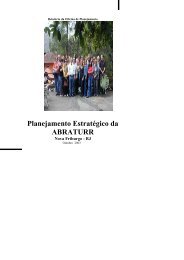TOURISM AND RURAL SETTLEMENTS Nepal's ... - ResearchGate
TOURISM AND RURAL SETTLEMENTS Nepal's ... - ResearchGate
TOURISM AND RURAL SETTLEMENTS Nepal's ... - ResearchGate
Create successful ePaper yourself
Turn your PDF publications into a flip-book with our unique Google optimized e-Paper software.
SANJAY NEPAL 871<br />
This study of the local impact of an international phenomenon<br />
determines the type and level of changes in rural settlements’ distribution<br />
and hierarchies, and provides explanations as to why particular<br />
patterns and trends have emerged. This is done in two ways. First, a<br />
functional perspective to tourism-induced development patterns is provided.<br />
Second, a humanist perspective on how these changes have<br />
been influenced by several endogenous factors is discussed. Traditionally,<br />
rural areas have been perceived to be slow to change, but with<br />
increasing mobility and the influx of tourists, settlements like those<br />
in the Annapurna region are expanding in size and appearing more<br />
modern than in the past. Traditional settlements that were primarily<br />
subsistence-oriented are now gradually adapting to a cash-based, market<br />
economy. Some specific changes in the Annapurna region include:<br />
overall, more built-up areas; settlements physically expanding both vertically<br />
and horizontally; many smaller settlements dominated by lodges;<br />
linear patterns of expansion following the main trekking routes;<br />
settlements emerging as service-oriented more than as agriculture or<br />
trade centers; emergence of a hierarchical structure; bigger, multistoried<br />
houses with very large accommodation capacities; and architectural<br />
(interior and exterior) changes in housing design, and modern<br />
facilities (such as showers, living rooms, and attached bathrooms).<br />
The increases in dwellings, infrastructure development, dispersal pattern,<br />
and the development of settlement hierarchies observed in<br />
Annapurna are similar to the effects of counterurbanization. It is unlikely<br />
that in the absence of international tourist flow to the region,<br />
these settlements would have progressed to the stage where they are today.<br />
The patterns have been influenced by historic and current economic,<br />
social, and political structures. For example, expansion of<br />
lodges during the early periods was influenced more by local landowners<br />
and rich entrepreneurs and their social and political networks, a<br />
finding that is consistent with counterurbanization studies which indicate<br />
how select groups of local landowners are able to influence the social<br />
and political structures that determine how urbanization<br />
progresses in rural areas (Spencer 1995). The post-90s growth patterns<br />
in Annapurna lodges represent a gradual progression toward a free<br />
enterprise system introduced after the democratic changes in the<br />
country in 1990 which restricted the political power of the rural elite<br />
and increased involvement of rural communities in the decisionmaking<br />
processes.<br />
The study proposes a normative classification of tourism-induced<br />
rural settlements based on their history, growth in number and size<br />
of lodges, period of lodge establishment, type of economic dependence,<br />
and location. Furthermore, an asymmetry of core-periphery<br />
configuration of tourism-induced settlements has emerged. At a regional<br />
level, types I and II exhibit characteristics of core; types III, IV and<br />
V can be characterized as peripheral settlements. The progression<br />
from a lower order to a higher order, and from the periphery to core,<br />
is not necessarily linear, as historical precedents, economic imperatives,<br />
cultural traditions, and geographic locations have affected the<br />
growth and distribution of rural settlements. In the Annapurna region,


